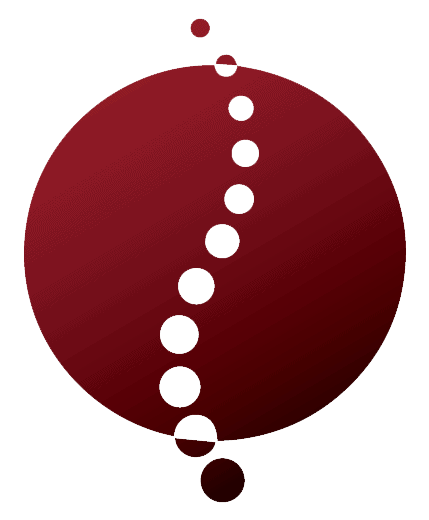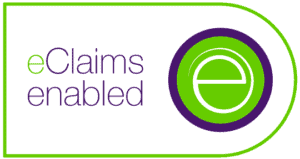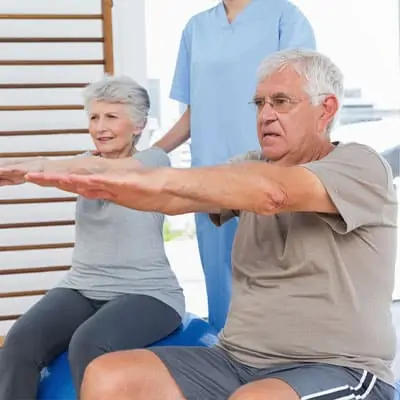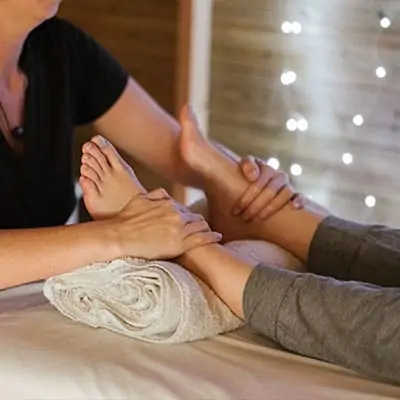Understanding Neck Pain
Neck pain can significantly affect your quality of life. Understanding the causes and impacts of neck pain can help you address it more effectively.
Causes of Neck Pain
Numerous factors can contribute to neck pain. Common causes include:
| Cause | Description |
|---|---|
| Poor Posture | Slouching or leaning while sitting or standing. |
| Muscle Strain | Overexertion during physical activities or sleep. |
| Injury | Whiplash or other trauma from accidents. |
| Degenerative Disc Issues | Wear and tear of the spinal discs over time. |
| Stress and Tension | Emotional stress that leads to muscle tightness. |
These causes can stem from a mix of lifestyle choices and physically demanding activities. Understanding your specific triggers is crucial in managing your discomfort.
Impact of Neck Pain on Daily Life
The effects of neck pain can extend into various aspects of your daily routine. Here are some common impacts:
| Impact | Description |
|---|---|
| Decreased Mobility | Difficulty turning your head or performing tasks. |
| Disrupted Sleep | Inability to find a comfortable sleeping position. |
| Impaired Concentration | Struggling to focus due to pain or discomfort. |
| Limited Physical Activity | Avoiding exercise due to fear of aggravating pain. |
| Emotional Effects | Anxiety or depression due to chronic discomfort. |
The discomfort caused by neck pain can disrupt your daily activities and overall well-being. Massage therapy can be an effective solution for alleviating neck pain and its associated impacts. To learn more about the benefits, check our section on massage therapy benefits.
Benefits of Massage Therapy for Neck Pain
How Massage Therapy Helps Alleviate Neck Pain
Massage therapy provides several advantages for individuals suffering from neck discomfort. Here are key ways it can help alleviate pain:
-
Increased Blood Circulation: Massage promotes blood flow to the affected areas. Enhanced circulation brings oxygen and nutrients to the muscles, aiding in recovery and reducing tension.
-
Muscle Relaxation: Tension in the neck muscles can contribute to pain. Massage techniques help to relax tight muscles, releasing built-up stress and improving range of motion.
-
Pain Reduction: Various massage techniques can directly target pain points in the neck, providing relief. By alleviating muscle tension and inflammation, you may experience reduced discomfort.
-
Endorphin Release: Your body naturally produces endorphins during massage. These hormones act as natural painkillers, enhancing your mood and blocking pain signals.
-
Improved Posture: Regular massage can assist in realigning the spine and reducing muscle tightness, which can lead to better overall posture. Improved posture can significantly reduce neck strain.
-
Stress Relief: Emotional and mental stress can cause physical tension in the neck. Massage therapy offers rejuvenating benefits that reduce stress levels, indirectly helping to ease neck pain.
The table below summarizes key benefits of massage therapy for neck pain.
| Benefit | Description |
|---|---|
| Increased Blood Circulation | Aids in muscle recovery through enhanced nutrient delivery. |
| Muscle Relaxation | Reduces tightness, improving movement and comfort. |
| Pain Reduction | Targets problem areas directly for immediate relief. |
| Endorphin Release | Promotes happiness while dampening pain perception. |
| Improved Posture | Aligns muscles and spine, reducing discomfort. |
| Stress Relief | Lowers mental stress, easing physical tension. |
Scientific Evidence Supporting Massage Therapy
Numerous studies validate the effectiveness of massage therapy in managing neck pain. Research has shown positive outcomes for individuals seeking relief. Here are a few findings:
- A study published in the Journal of Manipulative and Physiological Therapeutics indicated that patients receiving massage therapy reported greater improvements in pain and function compared to those not receiving massage.
- Research demonstrated that a combination of deep tissue massage and soft tissue stretching led to significant reductions in chronic neck pain in a controlled trial.
- The International Journal of Therapeutic Massage and Bodywork highlighted findings that regular massage therapy sessions resulted in lasting pain relief, improved muscle function, and overall better mental health in participants with neck pain.
When considering massage therapy for neck pain, the scientific backing reinforces its effectiveness. For more information about various types of massage therapy and their benefits, dive deeper into the subject.
Types of Massage Techniques
When it comes to addressing neck pain, several massage techniques can provide relief and improve your overall comfort. Below are three common types of massage therapy that are effective for alleviating neck pain.
Swedish Massage
Swedish massage is a gentle technique characterized by long strokes, kneading, and circular movements on the top layers of muscles. This method promotes relaxation and improves circulation, making it ideal for those experiencing mild neck discomfort.
| Technique | Key Features | Benefits |
|---|---|---|
| Swedish Massage | Long strokes, kneading, circular motions | Promotes relaxation, reduces tension, enhances circulation |
This massage method can help relieve stress and tension that can contribute to neck soreness. For more information, visit our article on swedish massage therapy.
Deep Tissue Massage
Deep tissue massage targets deeper layers of muscles and connective tissues. It involves slower strokes and more intense pressure, which can help break down adhesions and relieve chronic pain.
| Technique | Key Features | Benefits |
|---|---|---|
| Deep Tissue Massage | Intense pressure, slower strokes | Reduces chronic pain, improves mobility, breaks down muscle knots |
This technique is particularly effective for managing acute neck pain caused by injuries or long-term tension. Learn more about deep tissue approaches in our article on deep tissue massage therapy.
Trigger Point Therapy
Trigger point therapy focuses on specific points within muscle tissues that are hyperirritable, known as trigger points. These knots can cause referred pain and discomfort, including in the neck area.
| Technique | Key Features | Benefits |
|---|---|---|
| Trigger Point Therapy | Focus on hyperirritable points, sustained pressure | Relieves localized pain, reduces muscle tension, improves mobility |
This method utilizes targeted pressure to alleviate tension and pain in specific areas, making it effective for chronic neck pain. For further details, check our article on trigger point massage therapy.
By understanding these various massage techniques, you can choose the one that best suits your needs. Each method has its own unique benefits in addressing neck pain, helping you return to a more comfortable state.
Finding a Qualified Massage Therapist
Choosing the right massage therapist is a crucial step in relieving neck pain effectively. It is important to ensure that the therapist has the right qualifications and that you feel comfortable discussing your specific needs.
Qualifications to Look For
When searching for a qualified massage therapist, consider the following qualifications:
| Qualification | Description |
|---|---|
| License | Ensure the therapist holds a valid license to practice in your state. |
| Certification | Look for certifications from recognized massage therapy organizations. |
| Specialization | Find out if they specialize in massage therapy for neck pain or related conditions. |
| Experience | Check how long they have been practicing and their experience with neck pain treatments. |
| Continuing Education | Verify if they participate in ongoing training to stay updated on techniques. |
Questions to Ask During Consultation
Asking the right questions can help ensure you find a therapist suited to your needs. Here are some important questions to consider:
| Question | Purpose |
|---|---|
| What techniques do you use for treating neck pain? | Understand the methods the therapist employs for neck pain relief. |
| Do you have experience with specific medical conditions? | Assess if they have worked with clients who have similar neck pain issues as yours. |
| How do you tailor your sessions to individual clients? | Discover how they adapt their approach to meet your specific needs and expectations. |
| What are your policies regarding cancellations and rescheduling? | Learn how flexible they are, which can be important for keeping your appointments. |
| Can you provide references from past clients? | Obtain feedback from others to gauge the effectiveness and satisfaction of their treatments. |
Finding a qualified massage therapist who understands your specific needs can significantly enhance the benefits of massage therapy for neck pain. Always prioritize your comfort and communication to ensure a successful therapeutic experience. For further information on different techniques, you can refer to our section on types of massage therapy.
Self-Care Tips for Neck Pain
Managing neck pain effectively involves incorporating simple self-care techniques into your routine. Here are some valuable tips to help alleviate discomfort and improve your overall neck health.
Proper Posture and Ergonomics
Maintaining proper posture is crucial for preventing and alleviating neck pain. Pay attention to your stance and seating positions throughout the day. Here are some guidelines to help you maintain good posture:
| Posture Considerations | Recommendations |
|---|---|
| Sitting | Keep your feet flat on the floor and your back straight against the chair. Ensure your chair supports your lower back. |
| Computer Work | Position your screen at eye level to avoid straining your neck while looking down. Use a chair that supports your back. |
| Sleeping | Choose a pillow that supports the natural curve of your neck. Avoid sleeping on your stomach, which can strain your neck. |
For more information on how posture impacts your neck, explore our article on therapeutic massage therapy.
Gentle Neck Stretches and Exercises
Incorporating gentle neck stretches and exercises can help alleviate tension and promote flexibility. Here are a few effective stretches to try:
| Stretch | Instructions |
|---|---|
| Neck Tilts | Sit or stand up straight. Slowly tilt your head toward one shoulder, hold for 15-30 seconds, then switch to the other side. |
| Chin Tucks | While sitting, pull your chin back toward your neck, keeping your head level. Hold for 5 seconds and repeat 10 times. |
| Shoulder Shrugs | Raise your shoulders towards your ears and then release them down. Repeat this 10 times for relief. |
Engaging in these stretches daily can be beneficial for enhancing your neck’s mobility. To learn more about exercises that can facilitate recovery, check out our article on massage therapy benefits.
Heat and Cold Therapies
Utilizing heat and cold therapies can effectively reduce inflammation and provide pain relief. Here’s how to apply each method:
| Therapy Type | Application |
|---|---|
| Heat Therapy | Use a warm towel or heating pad on the neck for 15-20 minutes. This promotes blood flow and relaxes tight muscles. |
| Cold Therapy | Apply an ice pack wrapped in a towel to the affected area for 10-15 minutes. This helps reduce swelling and numb pain. |
Alternating between heat and cold therapies can also be beneficial. For more specific therapies related to various ailments, consider visiting articles on massage therapy for back pain and massage therapy for arthritis.
Incorporating these self-care strategies into your routine can significantly enhance your neck health. By focusing on posture, gentle stretches, and therapeutic applications, you can take proactive steps toward reducing neck discomfort and maintaining overall well-being.
Incorporating Massage Therapy into Your Routine
To effectively manage neck pain, incorporating massage therapy into your routine can provide significant relief. Understanding how to utilize this form of treatment properly will enhance its benefits.
Frequency of Sessions
The frequency of massage therapy sessions can vary based on individual needs and pain levels. Here are general recommendations based on your situation:
| Condition | Recommended Frequency |
|---|---|
| Acute Neck Pain | 2-3 times per week |
| Chronic Neck Pain | 1-2 times per week |
| Maintenance | Once a month |
Regular sessions can help reduce tension and improve mobility. It is essential to consult with your massage therapist to determine the best schedule for your specific case. For additional insights on different massage techniques, refer to our article on types of massage therapy.
Home Care Strategies
In addition to professional massage therapy, implementing self-care strategies at home can enhance recovery. Effective home care strategies include:
- Heat Application: Use a warm compress or heating pad on your neck for 15-20 minutes to combat stiffness.
- Cold Therapy: Apply ice packs to reduce swelling and numb pain for 10-15 minutes.
- Gentle Stretches: Incorporate neck stretches to improve flexibility. Here are a couple to consider:
| Stretch | Description |
|---|---|
| Neck Tilts | Slowly tilt your head towards each shoulder, holding for 15-30 seconds. |
| Chin Tucks | Gently tuck your chin towards your chest while keeping your back straight for 10 seconds. |
For more guidance on gentle neck exercises, check our article on therapeutic massage therapy.
Tracking Progress and Adjusting Treatment Plans
Monitoring your improvement is crucial. Keeping a journal to track pain levels, session frequency, and any changes experienced can help you and your therapist create an effective treatment plan. Consider noting:
- Pain Levels: Use a scale from 1 to 10.
- Activities and Triggers: Record any activities that exacerbate your pain.
- Relief Factors: Document what techniques or treatments have helped alleviate your pain.
Regularly review your notes with your therapist. This collaboration allows for adjustments in your treatment strategy, ensuring it remains effective over time. For additional insights into massage therapy’s broader applications, explore our article on massage therapy benefits.











